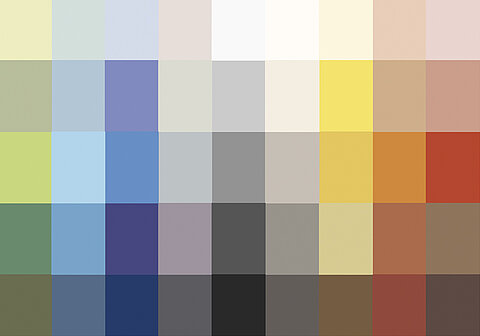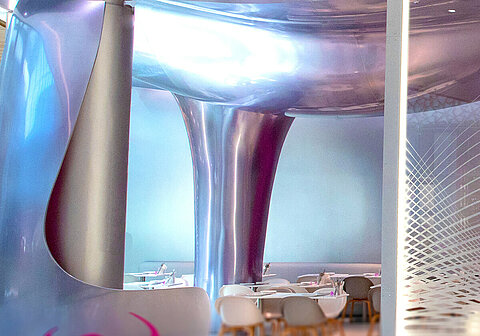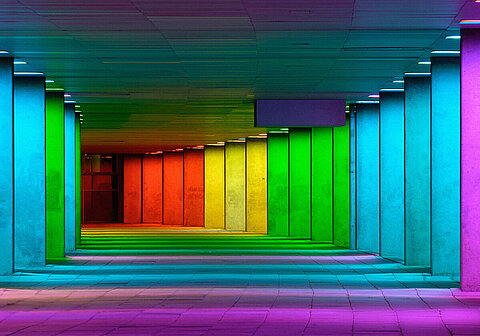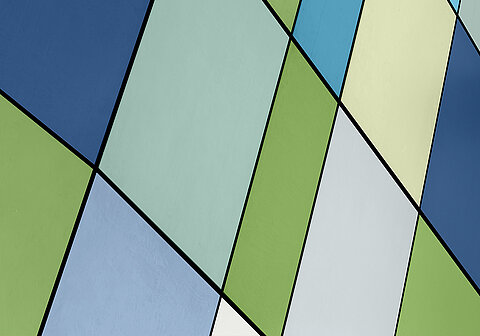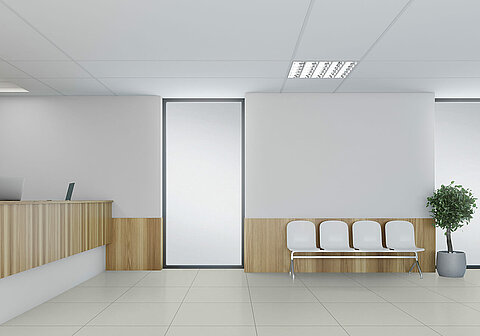Profile
Vineyard Dr. Loosen: Family-owned for more than 200 years
1988: Ernst F. Loosen takes over the estate
Size: 50 hectares on the Mosel, in addition to vineyards in the Rheinland Palatinate and Oregon, USA
Quality: Word class Riesling from the best regions (VDP.GROSSE LAGE ®)
Awards: Top marks in Gault Millau, Vinum, Decanter, Wine & Spirits.
Although he initially studied archaeology, Ernst Loosen finally followed in his family's footsteps and became a winemaker. From the vineyard in Bernkastel-Kues, he succeeded in a few years in helping Riesling from Germany regain its reputation. The original, complex wines enjoy great popularity all over the world today. They are vinified from grapes in the best southern region, some of which are over 100 years old.
We asked icon Ernst Loosen why wine is a multi-sensory experience for winemaking, in the vinotheque of his 200-year-old vineyard.
The core sentence of your philosophy says: "A great wine is created in the mind". That brings us right to the heart of the matter. Your definition is first about the creation of a wine. Would you also agree that wine is enjoyed with all the senses?
Of course! The influence of the different seasons alone contributes to the holistic taste experience. The soft light in spring, plus the scent of nature's first growth - this interplay has a completely different effect on the taste of wine than the last of the autumn sun, combined with the morbid smell of leaves. Sight, smell and taste actually create a multi-sensory experience.
It is well known that music is responsible for emotional experiences. Would you listen to something different with a red wine than with a white wine?
Indeed, the choice of music for me is related to what goes into the glass. However, it's not about the colour of the wine, but about its characteristics: I listen to something different with an edgy, rough wine than with a light, sparkling one.
What kind of surroundings do you see yourself in?
In my opinion, colour temperature is the same as wine temperature: In a cool, bright atmosphere, I would never drink a heavy red like a Bordeaux. It goes perfectly with the warm light of a fireplace. Basically, however, the most important prerequisite for perfect wine enjoyment is an atmosphere in which you feel comfortable. A realisation that also strongly influenced the renovation of our vineyard with the vinotheque. We have created a harmoniously sophisticated environment with fine craftsmanship and a lot of love for the smallest detail, which is above fashion trends and indeed, defies all trends. We spent four years alone looking for an architect - and that's only because I didn't want to create an environment of concrete, glass and steel, but rather spaces that blend harmoniously with the historic building - as if they had always been there.

Art or architectural sketch? The expansion of the vinotheque is based on hand-drawn designs of the architect.

Under the canopy: Even the chandelier with its wine-blessed putti is made according to the architect's model.
Speaking of white and red: the colour of the wine creates a certain expectation in terms of taste. Is it possible to be mistaken?
Not in most cases. If you have a dark, almost black red wine in front of you, it is naturally more tannic and stronger than a light red one. The same applies to white wine: if it shimmers golden yellow in the glass, it is more mature, heavier and often shows noble sweetness.
However, the influence of visual perception goes much further. There are countless sensory studies that prove that wine connoisseurs and even sommeliers find it difficult to recognise a wine when it is served in a black glass, for example. Again, proof, that you need more than one sense to really enjoy a grape.
So almost all the senses have an influence on the wine experience. Does feeling also play a role?
Certainly not feeling in the sense of touching but in fact, the quality and shape of the glass contribute to the perfect taste. Hand-blown glasses, with their extremely fine mouth, ensure that the wine is absorbed in a more differentiated way by the taste receptors in the mouth. The shape of the goblet is also responsible for the development of the aroma. Red wines need bulbous goblets and thus a lot of surface area so that the wine comes into contact with oxygen and can develop its aroma. White wines contain less tannins and need less oxygen to develop their fine aroma. Their fragrance is optimally bundled in slender glasses.
All in all: how would you describe the special multi-sensory adventure of wine?
In simple words: wine is emotion.






 Borrowing from historical models: Every detail represents timeless style that outlasts trends.
Borrowing from historical models: Every detail represents timeless style that outlasts trends.

